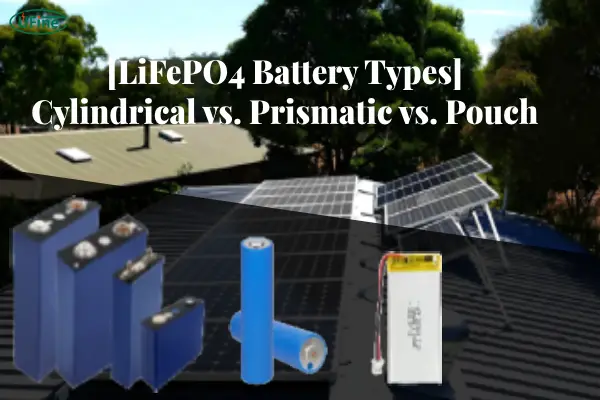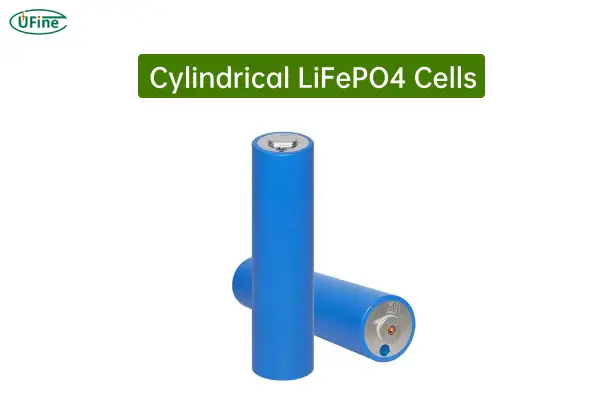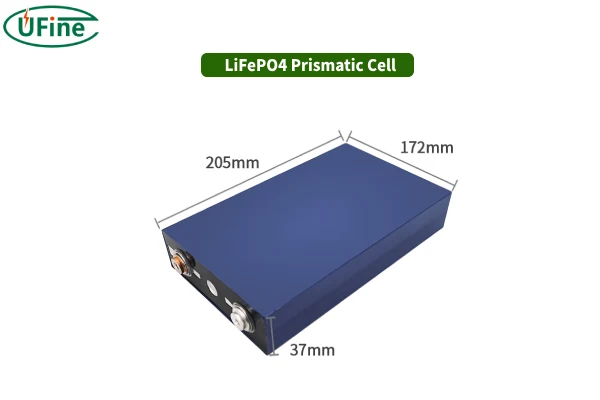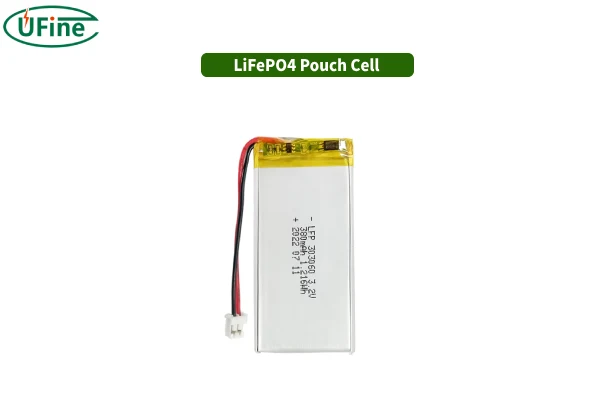LiFePO4 batteries, or lithium iron phosphate batteries, are increasingly recognized for their remarkable safety, longevity, and versatility. Their unique chemistry and design make them a preferred choice in various applications, ranging from electric vehicles to renewable energy storage. But what exactly are LiFePO4 batteries, and how do the different series of these batteries cater to specific needs? This article aims to provide a comprehensive overview, exploring the various classifications, advantages, and practical applications of LiFePO4 batteries, ultimately guiding you to make an informed decision for your energy needs.
Part 1. Overview of LiFePO4 battery
LiFePO4 batteries are a specific type of lithium-ion battery characterized by their use of lithium iron phosphate as the cathode material. This choice of material contributes to several advantageous properties:
-
Safety: One of the most notable features of LiFePO4 batteries is their inherent thermal stability. They are less prone to overheating and combustion compared to other lithium battery chemistries, making them a safer option, especially in high-temperature environments.
-
Longevity: These batteries can endure a significant number of charge cycles—often exceeding 2000 cycles—without a substantial drop in capacity. This durability translates to lower replacement costs over time, making them economically appealing.
-
Performance: LiFePO4 batteries maintain a stable voltage throughout their discharge cycle, ensuring consistent performance until nearly depleted. This reliability is crucial for applications that depend on a steady power supply.
Part 2. What are the different series of LiFePO4 batteries?
LiFePO4 batteries can be categorized based on several criteria, allowing consumers to understand their options better. The primary classification methods include:
By Shape
-
Cylindrical Cells: These batteries have a round shape and are commonly used in consumer electronics. Their robust design enhances durability and heat dissipation, making them suitable for devices like power tools and laptops.
-
Prismatic Cells: Known for their rectangular shape, prismatic cells are efficient in terms of space and are often used in electric vehicles and larger energy storage systems. Their design allows for more flexible arrangements in battery packs.
-
Pouch Cells: Lightweight and flexible, pouch cells are ideal for applications where minimizing weight is crucial, such as drones and portable electronics. However, they can be more sensitive to temperature changes and mechanical stress.
-
Large-Format Cells: These are designed for high-capacity applications, making them perfect for renewable energy systems. They provide bulk energy storage, which is essential for solar power installations and grid support.
By Current Level
-
Low Current: Ideal for devices requiring minimal energy, such as portable fans and flashlights, low current batteries are efficient for everyday use.
-
Medium Current: Often used in power tools and e-bikes, these batteries strike a balance between power output and efficiency, making them versatile for various applications.
-
High Current: Essential for demanding applications like electric vehicles and heavy machinery, high current batteries are engineered for maximum performance and energy delivery.
By Application
-
Consumer Electronics: LiFePO4 batteries are widely used in laptops, smartphones, and other portable devices, where reliability and safety are paramount.
-
Electric Vehicles: With the rise of electric mobility, LiFePO4 batteries are becoming increasingly common in e-bikes, scooters, and electric cars, providing a balance of weight, power, and safety.
-
Energy Storage: These batteries play a vital role in solar energy systems and grid storage solutions, ensuring that renewable energy can be harnessed and utilized effectively.
Part 3. LiFePO4 battery types: cylindrical vs. prismatic vs. pouch
Each cell type has its unique advantages, disadvantages, and ideal applications. Let’s explore the specifics of each:
1. Cylindrical LiFePO4 Cells
-
Advantages:
- Robust construction enhances durability and protection against physical damage.
- Excellent heat dissipation capabilities prevent overheating during intense usage.
- Generally have a good energy density relative to their size.
-
Disadvantages:
- Heavier and bulkier compared to other cell types, which may limit their use in lightweight applications.
-
Applications: Commonly found in portable electronics, power tools, and electric bicycles where reliability is crucial.
-
Voltage: Typically around 3.2V per cell, allowing for various configurations to achieve higher voltages.
-
Capacity Range: Usually between 1000mAh to 3000mAh, catering to both small and medium power requirements.
-
Price: Generally affordable, starting at $10-$20, making them accessible for many consumers.
2. Prismatic LiFePO4 Cells
-
Advantages:
- Space-efficient design allows for larger energy storage capacity, making them suitable for high-demand applications.
- Higher energy capacity compared to cylindrical cells, which can enhance performance in electric vehicles.
-
Disadvantages:
- Higher manufacturing costs compared to cylindrical cells, which may affect overall pricing in consumer applications.
-
Applications: Widely used in electric vehicles, large-scale energy storage systems, and industrial applications where efficiency and capacity are paramount.
-
Voltage: Maintains a nominal voltage of around 3.2V.
-
Capacity Range: Typically ranges from 100Ah to 200Ah, accommodating various power needs.
-
Price: Generally falls between $50 to $150, reflecting their advanced design and manufacturing process.
3. Pouch LiFePO4 Cells
-
Advantages:
- Lightweight and flexible design allows for compact applications, making them ideal for portable devices.
- High energy density for their size, which is beneficial in space-constrained environments.
-
Disadvantages:
- Less durable compared to cylindrical and prismatic cells; more sensitive to temperature fluctuations and mechanical stress.
-
Applications: Commonly used in portable electronics, such as smartphones and tablets, as well as in drones and other lightweight applications.
-
Voltage: Approximately 3.2V.
-
Capacity Range: Typically ranges from 1000mAh to 3000mAh, suitable for small to medium energy requirements.
-
Price: Usually priced between $15-$30, making them a viable option for consumer electronics manufacturers.
4. Large-Format LiFePO4 Cells
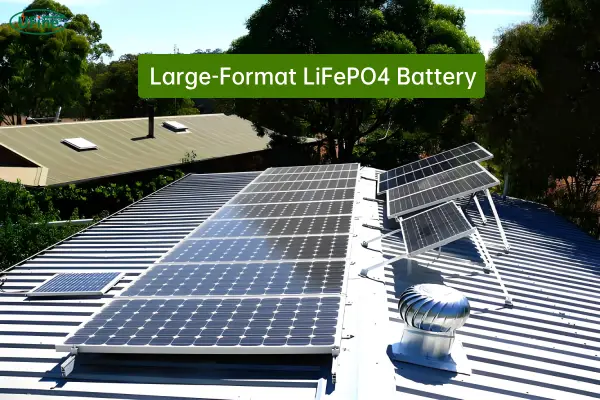
-
Advantages:
- Specifically designed for high capacity, ideal for large-scale energy storage applications.
- Efficient in supporting renewable energy systems, providing a reliable power source during peak demand.
-
Disadvantages:
- Requires more installation space, which can be a limitation in some residential applications.
- Higher initial investment costs compared to smaller cell formats.
-
Applications: Primarily used in solar energy systems, grid support, and commercial energy storage solutions, providing a backbone for renewable energy projects.
-
Voltage: Typically maintains a nominal voltage of around 3.2V.
-
Capacity Range: Generally starts at 200Ah and can go much higher, accommodating significant power needs.
-
Price: Prices start around $200 and can escalate based on capacity and specific requirements.
Part 4. LiFePO4 battery factory
As a leading lithium battery factory in China, Ufine Battery specializes in the production of a wide range of LiFePO4 batteries. Our commitment to quality and safety ensures that all our products meet rigorous industry standards, providing peace of mind to our customers.Ufine Battery offers solutions tailored to meet diverse needs and applications.
Part 5. Final words
Understanding the different series of LiFePO4 batteries is essential for making an informed choice. Each type offers unique advantages suited for specific applications, whether for electric vehicles, solar energy storage, or consumer devices. By selecting the right battery, you can enhance the efficiency and reliability of your projects.
Related Tags:
More Articles

The Future of 9 Volt Charging Batteries in Wearable Tech
9-volt batteries are becoming essential for wearable tech, offering compact, efficient power for devices like smartwatches and fitness trackers.
What is Liquid Lithium and How Does It Relate to Lithium-Ion Batteries?
Liquid lithium is a crucial material with unique properties, playing a role in advanced applications and lithium-ion batteries.
Lithium 24V Batteries for Golf Carts: Why They’re Becoming the New Standard
Lithium 24V batteries are replacing lead-acid in golf carts, offering better performance and numerous advantages over older technologies.
Double A Lithium Batteries for Camera Gear: A Smart Choice for Photographers
Double-A lithium batteries offer photographers durability, efficiency, and convenience, improving workflow and reliability for camera gear.
Why You Need a Lithium Battery Heater for Cold Weather Performance and Longevity
Cold weather can reduce lithium battery performance. This article explores how lithium battery heaters work and their benefits for cold weather use.
